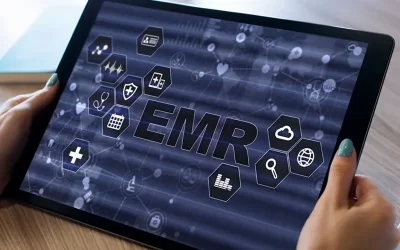Medical malpractice is a major concern for physicians and typically they may not like to think about malpractice and the need to take malpractice insurance as a safety measure. If a malpractice case is filed against a physician, many medical-legal processes follow suit, including medical record retrieval and review. In this blog, we are looking at telemedicine and its associated medical malpractice risks.
An emerging technology, telemedicine allows patients to use technology to obtain a diagnosis and treatment plan. According to the American Telemedicine Association (ATA), telemedicine is a healthcare provider’s provision of services to a patient using telecommunications technology, where the patient and provider are in different locations. Audio and video resources are used to enable patients to communicate with their healthcare providers in real time. Telemedicine may also involve the use of peripheral digital diagnostic medical devices. If face-to-face consultation is not required, they can talk over the telephone. Telemedicine technology is lauded for making remote medical care possible, especially after office hours. It is also a good alternative to visiting the ER or a doctor’s office for minor illnesses or a consultation, and offers excellent follow-up opportunities. Telemedicine technology must comply with HIPAA, HITECH and state regulations. Providers must follow all in-person medical practice standards, medical licensing boards, and informed consent requirements.
American Telemedicine Association Guidelines
Practitioners have to follow the practices and guidelines set forth by the ATA, and these may vary according to the practitioner’s specialization or designation. Some of the important ones are as follows.
- Health professionals are required to do the following:
- Provide care consistent with all relevant regulatory, licensing, credentialing, privileging and malpractice insurance and laws.
- Must be aware of the need of establishing a provider-patient relationship.
- Shall have the required training, education, licensing, and must have maintained ongoing professional development in order to safely provide care.
- Have the responsibility of making sure that workplaces are secure, private, and reasonably soundproof to ensure patient confidentiality. The telemedicine sessions should be conducted in a secure area where there will be no unexpected entry or other distractions.
- Clinical guidelines: Telemedicine professionals must abide by local, state, and federal regulations. They must also abide by applicable professional discipline guidelines. When working with patients, they must:
- Provide verification of identity and credentials
- Provide the patient with direct contact information
- Provide a location where the patient can verify the credentials
- Review expectations regarding further contact between the patient and provider, and also emergency management protocols.
- Receive specialized training in telemedicine software or associated devices, if required.
- Be familiar with local hospitals and travel requirements if a referral or emergency care is needed.
- Administrative guidelines: All requirements related to human resources, privacy and confidentiality, regulatory and ethics requirements must be addressed. Also, those related to patient rights and responsibilities, network and data access and security, use of devices and technology, and technical and medical competence must also be addressed.
Risks Involved in Telemedicine
- Software inadequacies: Telemedicine relies heavily on the software applications used to maintain records or run the system. Any inaccuracy in the programming of these applications or if they are compromised in some way or other, it could lead to negative outcomes and related repercussions.
- Glitches: Medical mistakes can result from software glitches, erratic records, or miscommunication. If patient records are incorrect, mistakes such as prescribing the wrong medication may happen.
- Medical negligence: Telemedicine could carry new avenues for physician negligence and medical malpractice. Concerns include healthcare providers considering their role in telemedicine as less important than their clinic work; and the risk of healthcare providers who have been sanctioned for substandard care seeking out positions in telemedicine since in principle they will not be seeing patients in the standard manner.
- Hackers: Telemedicine technology could fall prey to hackers who may alter medical records, tamper with communication records, adjust electronically controlled devices, or pretend to be a healthcare provider and speak to patients.
A 2009 report from the Center for Telehealth & e-Health Law (CTeL) highlights 2 main reasons that lead to telemedicine related medical negligence and malpractice.
- Online prescribing: Physicians may prescribe medications across state line to patients they had not previously examined. This becomes a more serious concern when the physician is not licensed in the state where the patient resides. It is important that physicians have a clear understanding of their state’s laws as well as state-specific information about online prescribing for each state where they will be issuing prescriptions. Find out whether the medical board of the state requires doctors to have a pre-existing relationship with a patient in order to prescribe medications online. Also, find out whether they require a face-to-face physical exam prior to online prescribing, and whether the exam can be performed using a telehealth medium such as videoconferencing. It is best to talk to the patient directly before prescribing. To reduce liability risk, providers must take notes and maintain records meticulously so that important things such as the following can be proved:
- The provider has established an appropriate relationship with the patient
- The provider has been able to evaluate the patient adequately
- The patient has provided the physician with an accurate health history
- Informed consent: Some states require informed consent, whereas some others don’t. Some states have informed consent laws specifically pertaining to telehealth. Providers must know the requirements for every state whose residents they prescribe for. They must have the names, credentials, and locations of every healthcare provider involved in the patient’s care; names, credentials and locations of any other assisting staff; descriptions of all telehealth services that will be performed and the technology that will be used.
Medical malpractice lawyers and the medical review firms assisting them with medical records analysis know that providers should necessarily seek legal advice to best understand the liability risk posed by telemedicine. It is important to note that physicians and patients may be located in states with different liability laws, standards of care, statutes of limitations and damage caps. Insurers may find it challenging to evaluate financial risks. Unauthorized medical practice can lead to disciplinary action in the doctor’s own state and potential prosecution.




